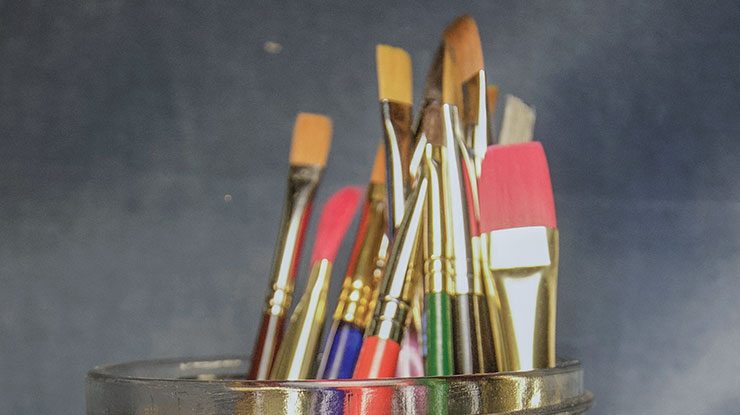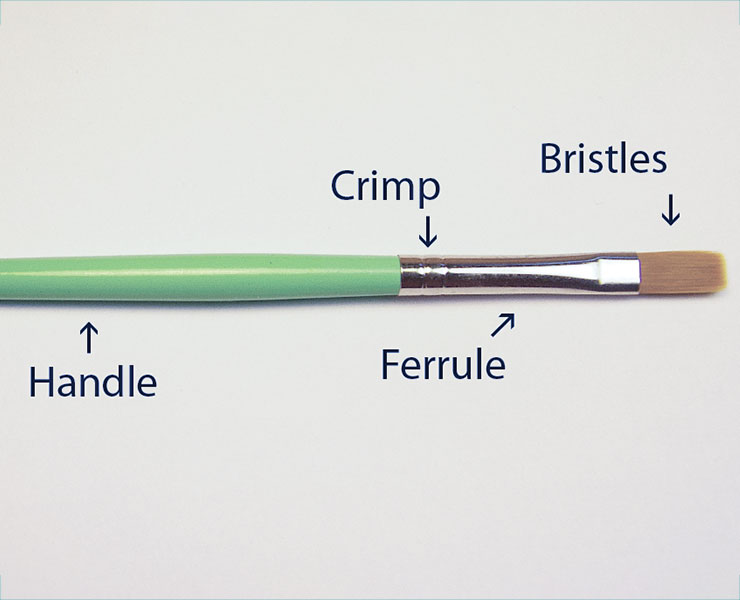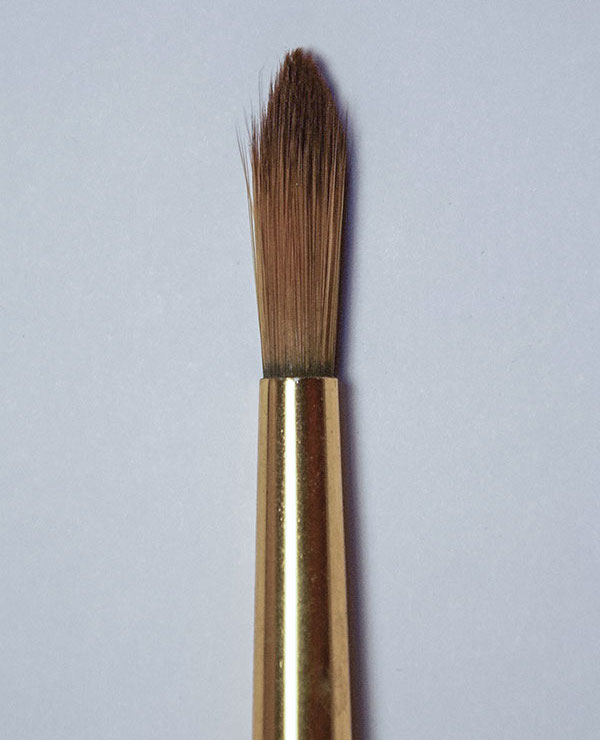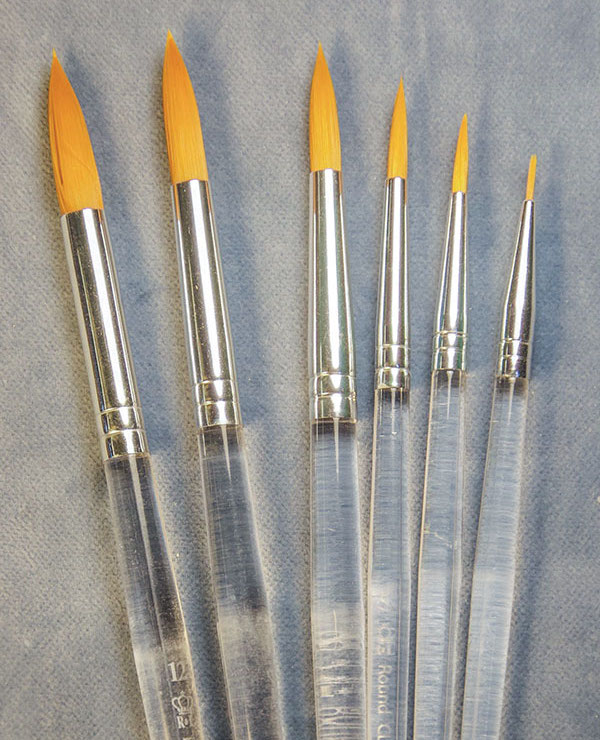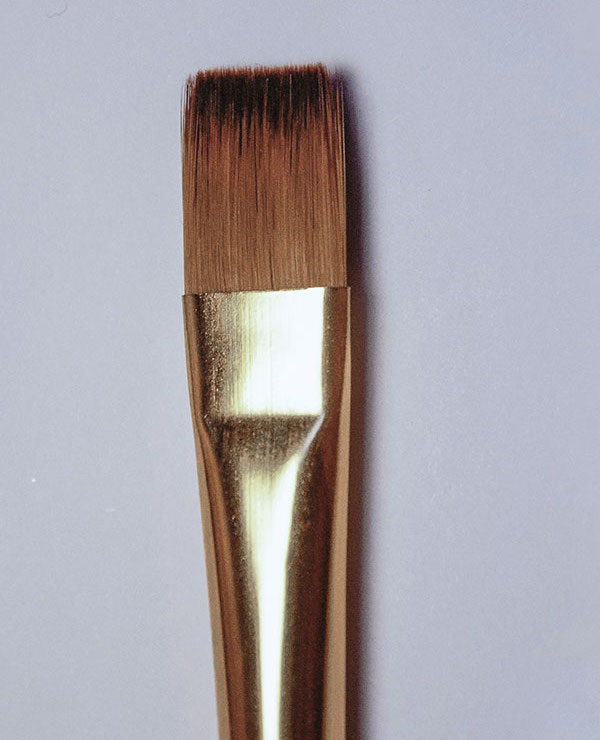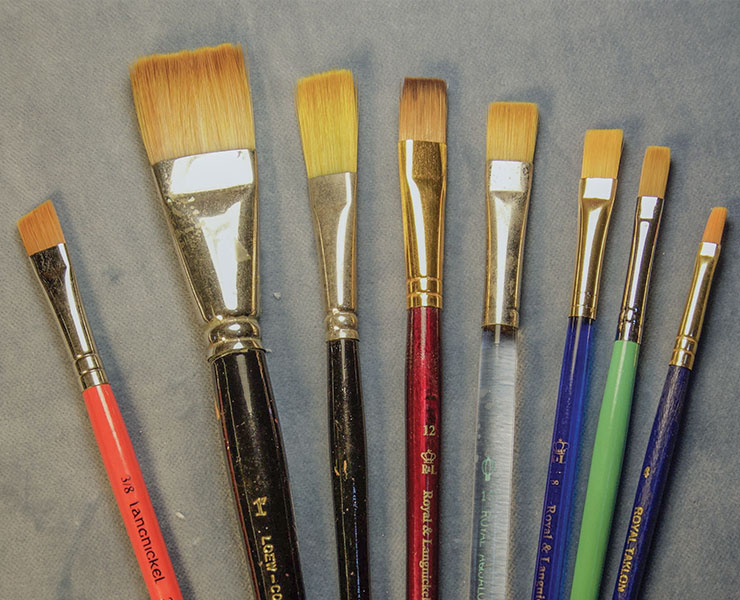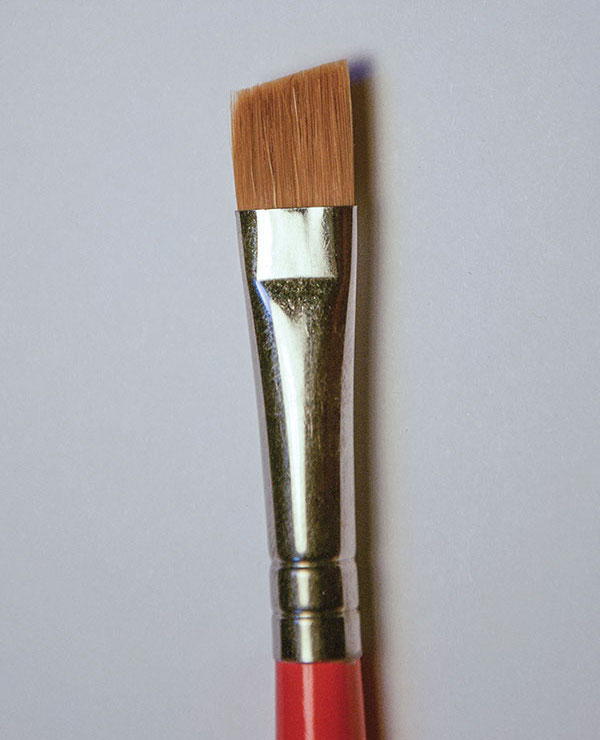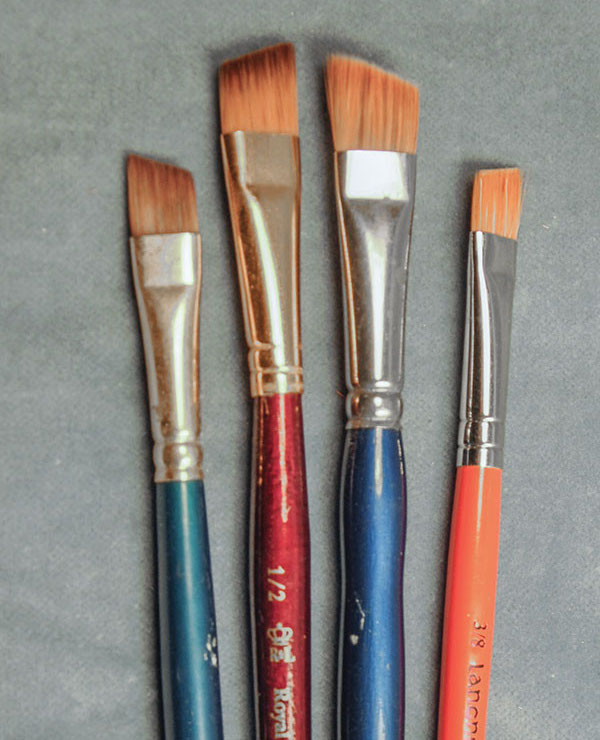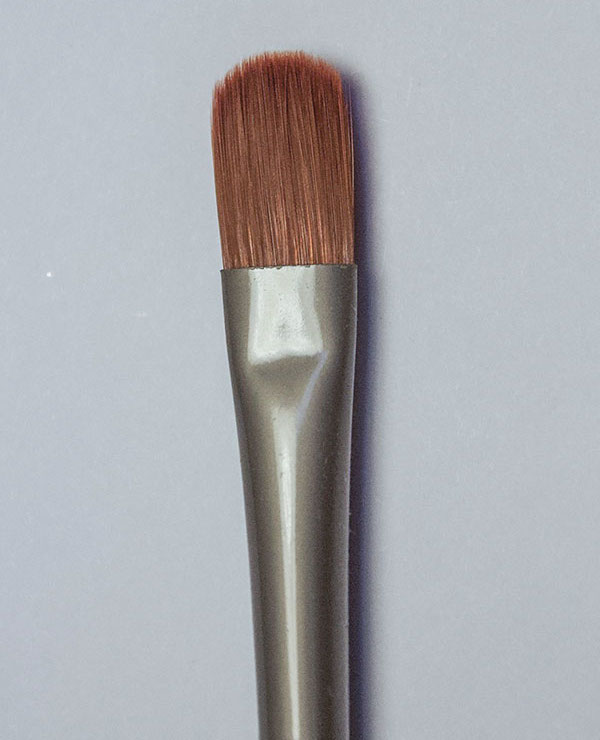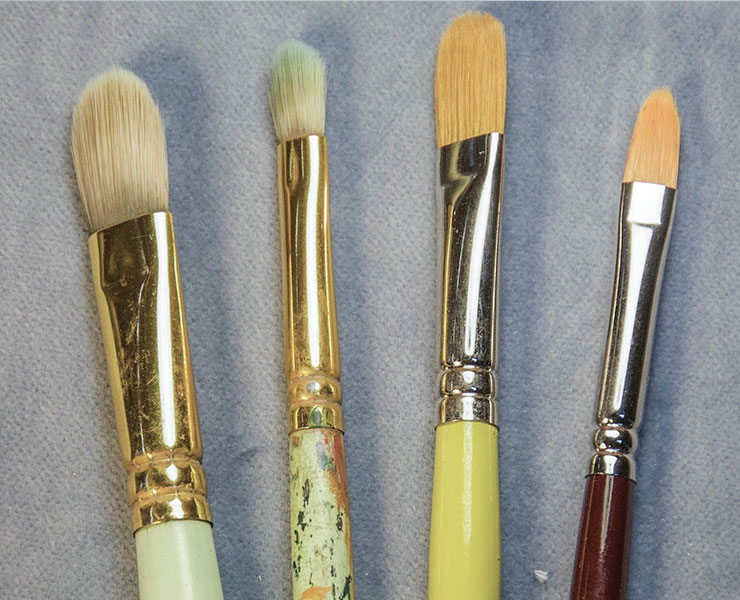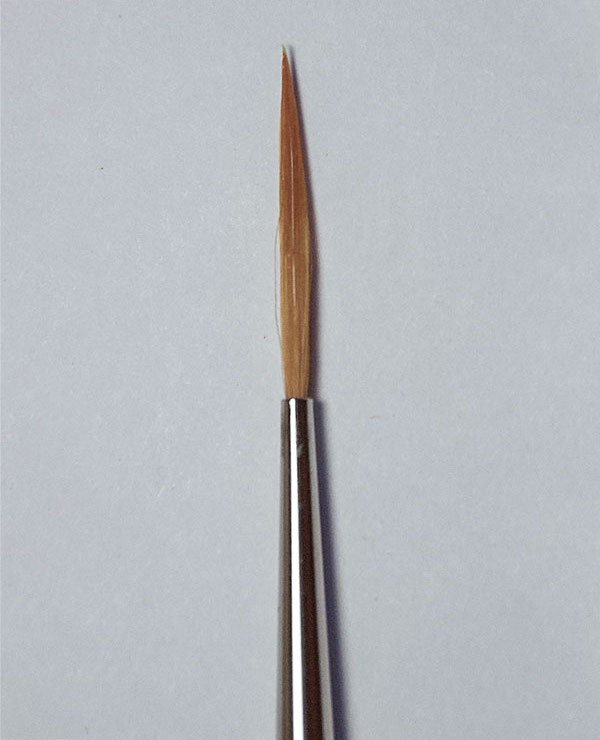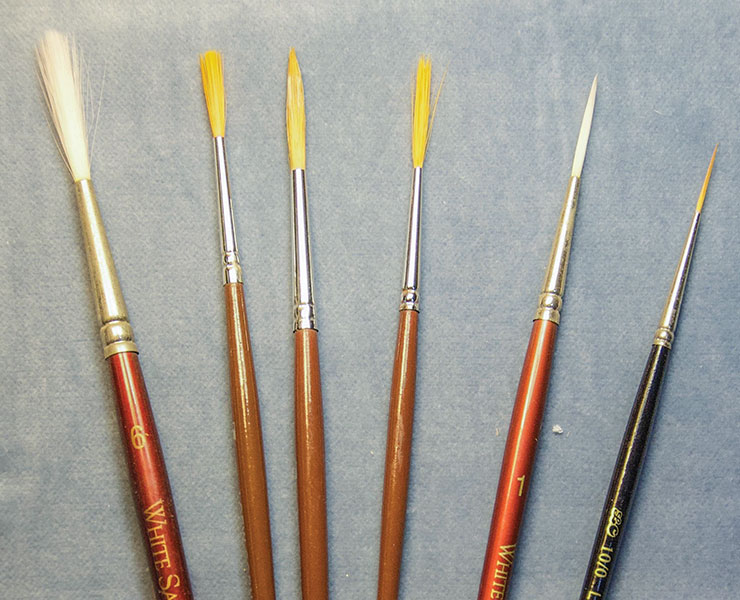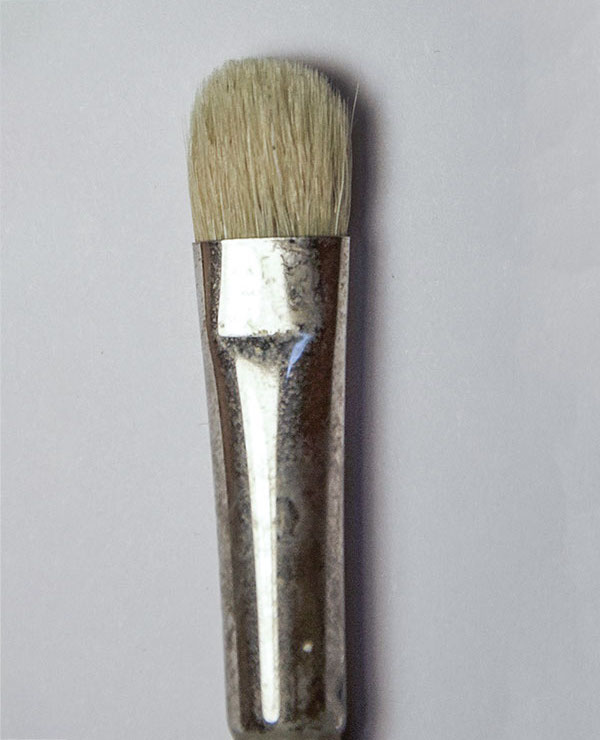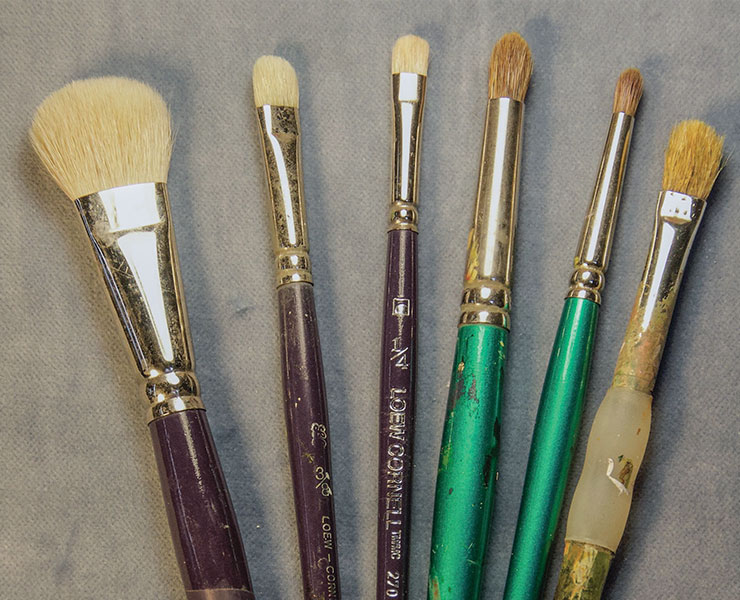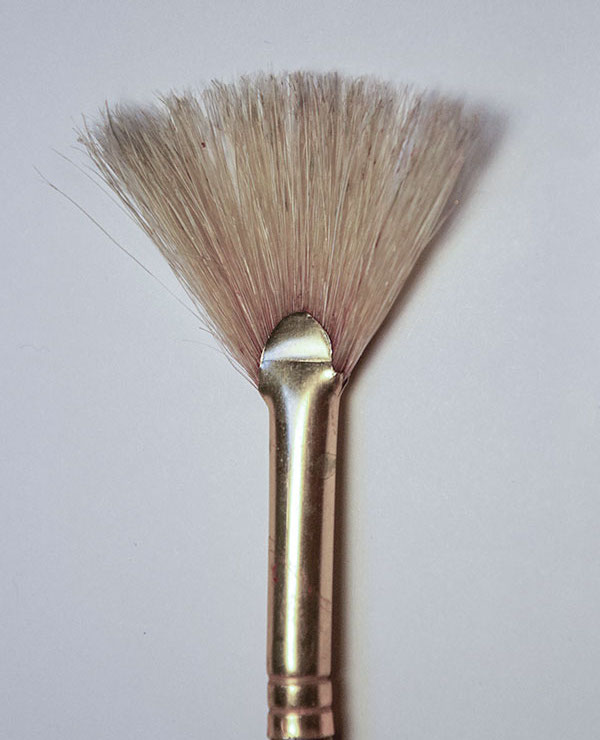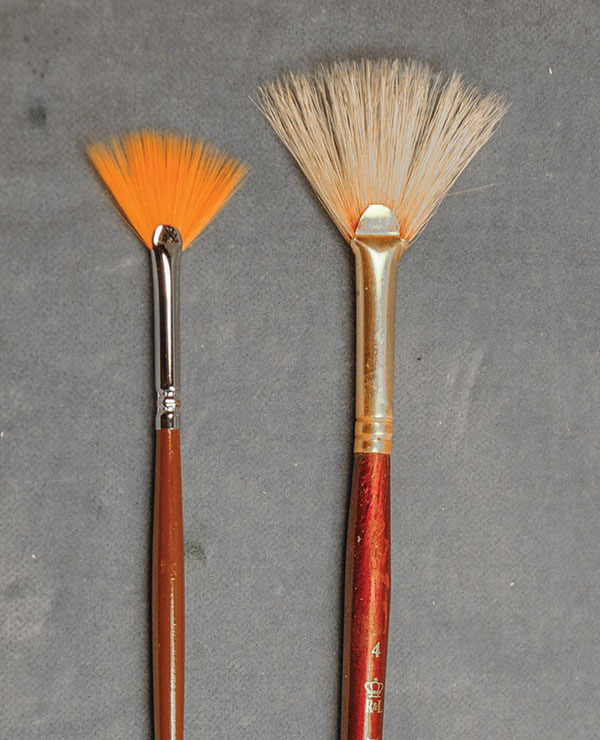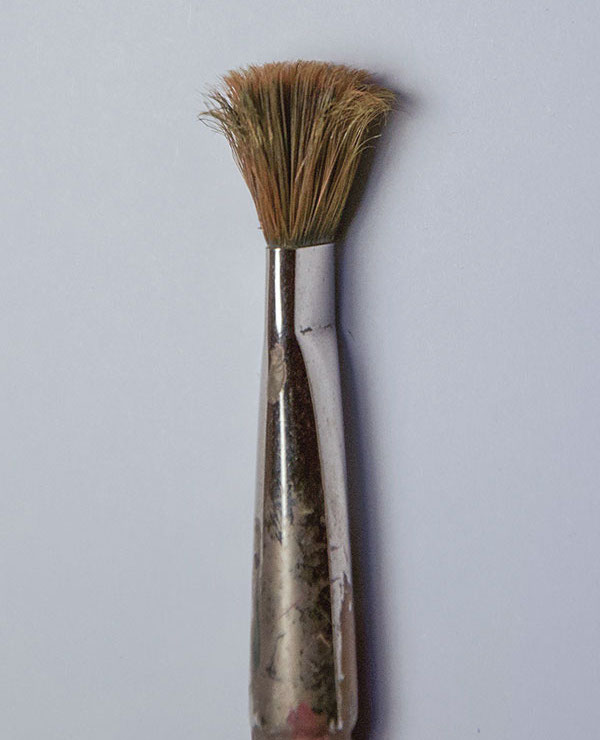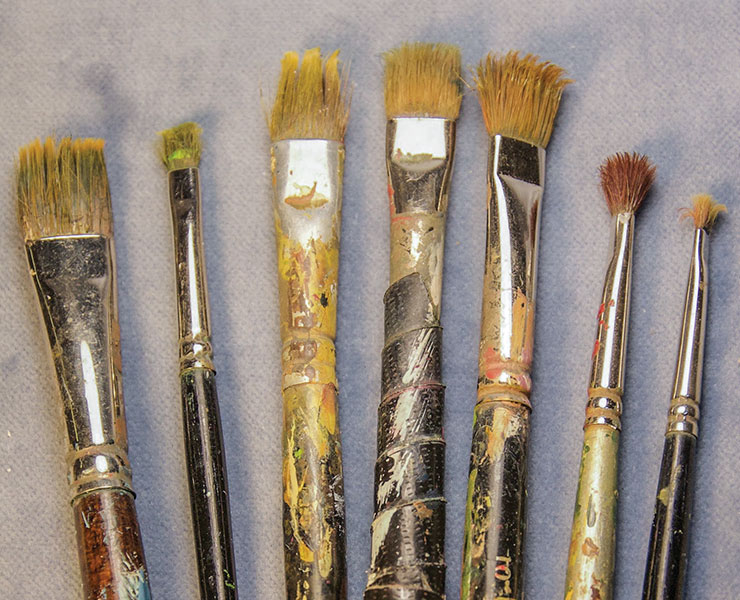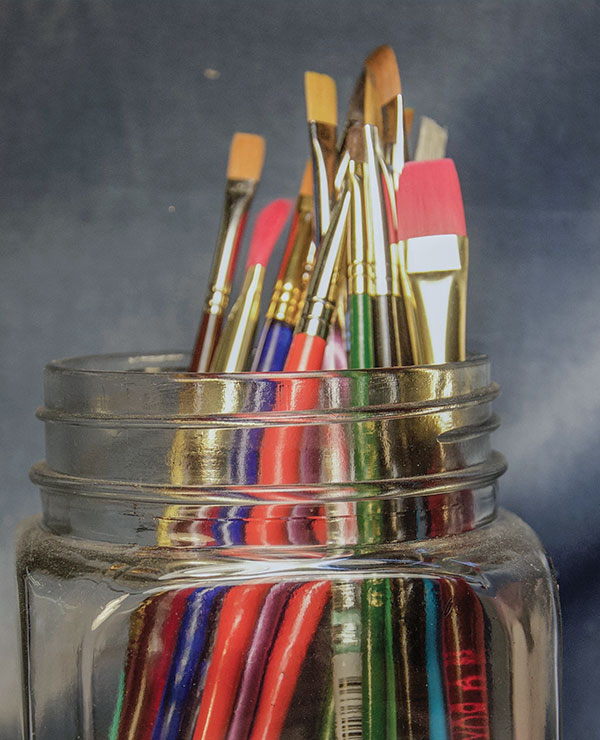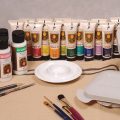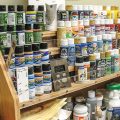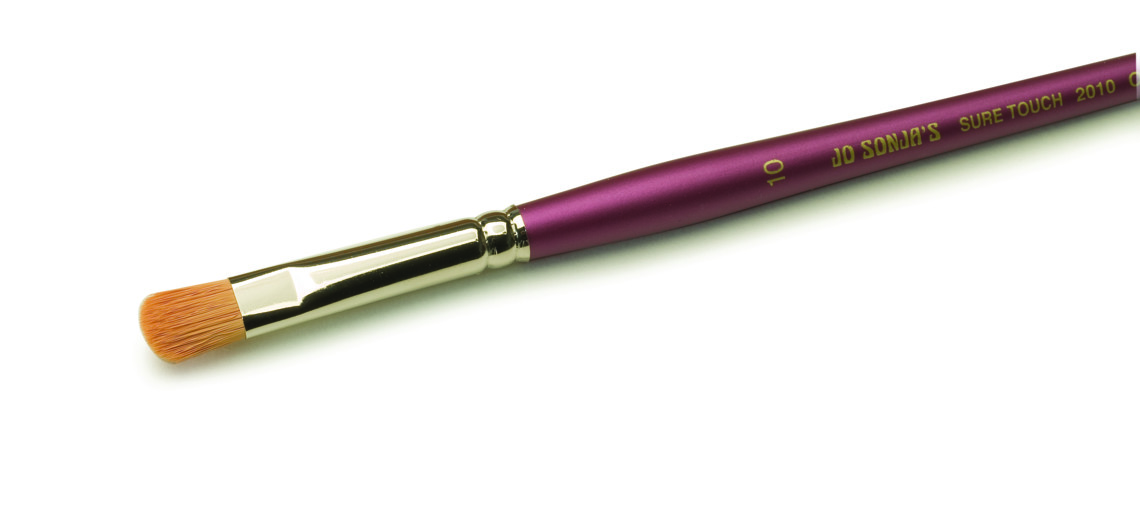Learn to select, clean, and store your brushes like a pro
By Betty Padden
Selecting paintbrushes can be a daunting task given the array of choices, but knowing the basics can make a world of difference! I’m here to break down the different types, shapes and sizes, and their uses. I’ll also cover brush cleaning and storage. As you use them, your brushes will become like old friends—much like your chisels and gouges; you’ll start to know how they will perform in a given situation. Care for these tools correctly and you’ll be able to use them for years! After learning all about brush care, try out your skills on these cute and cuddly cat shelf sitters.
Bristle Shapes
|
Rounds Workhorse of the set; used for applying paint and washes. |
|
Flats Used for painting large areas and adding textures, such as house or roof details. |
|
Angled flats Used like regular flats, but tip can reach into smaller areas. |
|
Filberts Good for blending or painting a soft edge. |
| Script liners
Used for fine lines and detail |
|
Blenders Used to blur the border between two colors to form a gradation of color. |
|
Fan brushes Used to paint textured areas like clouds, trees, or leaves. |
|
“Spoiled” brushes Great for blending and adding texture (It may be the Yankee in me, but I have a hard time throwing a brush out!). |
Storing Your BrushesStore your brushes upright in a container so the bristles don’t bend. I use a simple jar for organized storage and easy access. You can get carriers of all sizes at any art supply store if you need to transport your brushes and other painting supplies. |
| About the Author |
| Betty Padden and her husband, Bob, own Wooden Apple Signmakers in Auburn, Mass. They have been professional sign carvers for 47 years and have been teaching their craft to students for more than 30. They are the creators of SantaCarls®, a unique figure that has been sold at Disney parks and Busch Gardens. Betty also designs and paints for Ne’Qwa Art and Blossom Bucket, among other companies. Visit bettypadden.com for cutouts, patterns, and designs, and help for woodcarvers struggling with projects. See more of Betty’s work at woodenapplesignmakers.com. |
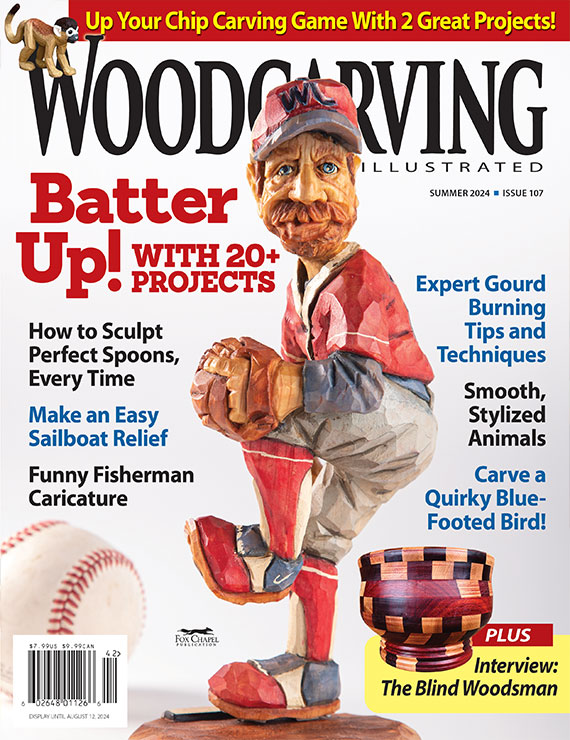 |
Get the Summer 2024 Issue Purchase the IssueFor more articles like this, subscribe to Woodcarving Illustrated magazine. Magazine SubscriptionPlus! Get digital mini magazines in your e-mail between printed issues.
|


